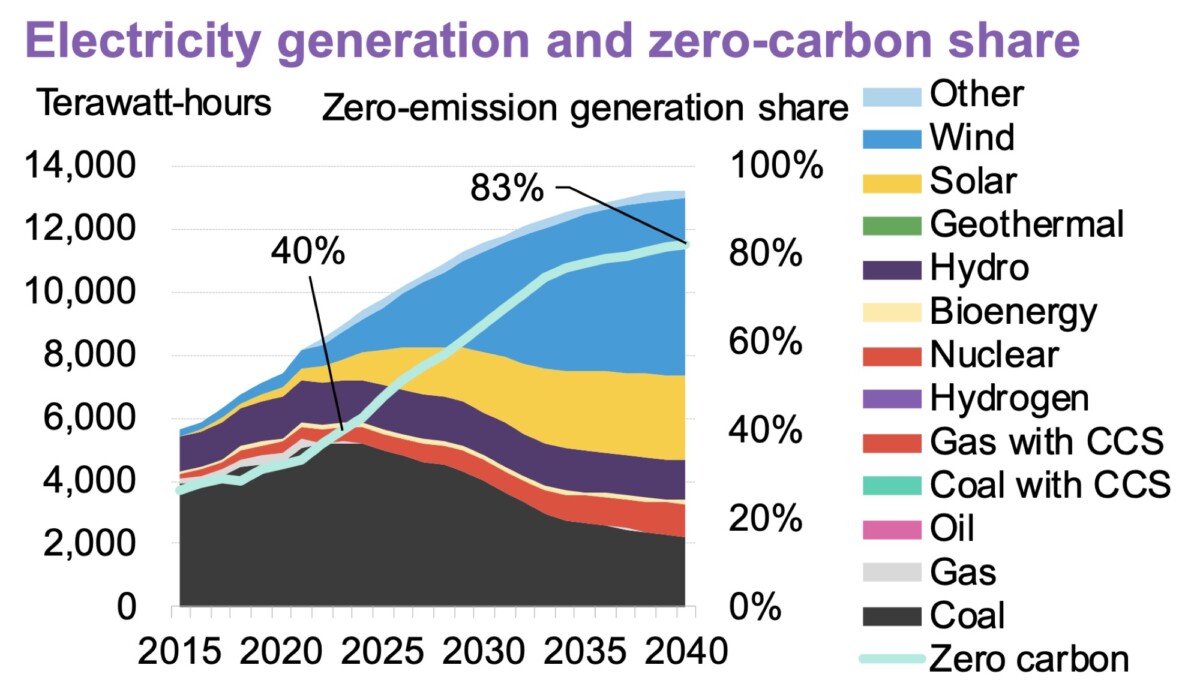Electric cars of 2024
At the time of writing these lines in 2024, it is outdated to consider that the production of electric cars is 100% local. Indeed, despite the announced growth of gigafactories in Europe, the bulk of battery production remains in China. In addition, certain brands that have established themselves in Europe to produce locally – such as Tesla – continue to import certain models from China, where the batteries and the vehicle are produced.
In this case, finding a 100% French electric car at the top of the sales table is now quite rare, and France is far from being an exception. In 2023, the best-selling car in the world was predominantly Chinese: the Tesla Model Y (more than half of production comes from the Shanghai Gigafactory).
In terms of ecological impact, having an electric car partially or entirely produced in China means making a bad start in terms of carbon debt, as we will see below. As a reminder, the carbon debt of an electric car usually refers to the difference in CO2 emissions left from the factory between a thermal car and an electric car. The production of batteries is the main responsible for this carbon debt, since the rest of the vehicle is only slightly different.
However, the carbon debt of an electric car is easily made up through use. And the number of kilometers necessary to reach equilibrium with a thermal car is increasingly smaller depending on whether the electricity used for charging is low-carbon.
| Country | Distance | Duration |
|---|---|---|
| USA | 41,000 km | 2.2 years |
| United Kingdom | 48,000 km | 4 years |
| Germany | 58,000 km | 5.1 years |
| China | 118,000 km | 9.6 years |
| Japan | 57,000 km | 5.6 years |
The recent Bloomberg study estimates that in 2023, it will take 41,000 kilometers in the United States for an electric car to catch up with its carbon debt, which corresponds to a little more than 2 years for an average American. Knowing that American electricity is very carbon-intensive (402 gCO2/kWh in 2023), there is plenty of room for improvement to reduce these figures.
The study focuses on five countries: the United Kingdom, Germany, Japan, China and the United States. In the worst case, it takes 118,000 kilometers to reach parity with a thermal car, and that’s in China. Let’s see what makes this country special, and how the situation will evolve by the end of the decade.
The particular case of China
The China of 2024 is a country where electricity production has a fairly poor carbon footprint, and this is reflected in the use of an electric car. In fact, no less than 121 gCO2 emitted per kilometer traveled are estimated when driving an electric car. For comparison, this is more than the estimated emissions of a combustion engine car in the UK.
The European authorities are not mistaken, notably with the recent saga of the ecological bonus in France, which now takes into account the environmental score of vehicles for eligibility. In practice, cars from China such as the Tesla Model Y, the MG4 or the Dacia Spring are excluded from the system.
However, the Middle Kingdom intends to develop its network, by working hard to decarbonize its electricity. In the next 15 years, the increase in the share of renewable energies in the country’s energy mix should make it possible to divide by 5 or 6 the quantity of CO2 per km driven in a recharged electric car in China.

As the graph above shows, we are actually at peak dirty electricity in China. Indeed, the share of wind and solar power in the Chinese energy mix will explode in the next 15 years, making it possible in particular to move to 83% 0-carbon electricity in 2040. At the same time, the share of Electricity from coal-fired power plants will fall from 58% to 17%, signaling the beginning of the end of Chinese carbon-based electricity.
Mini electric vehicles to the rescue?
If we compare the same electric cars in Europe or the USA and China, the results are indeed much worse in 2024 for vehicles charged in China. However, there is a whole segment of electric vehicles in China that can minimize the ecological impact, and therefore reduce the carbon debt: mini electric vehicles.

These are cars that are far from insignificant in terms of sales, since in 2023 they represented more than 10% of the country’s electric car sales. To have a lower carbon footprint, there is no secret: you need a smaller battery. On average, the battery pack of these mini cars is 17 kWh, which is equivalent to less than 30% of a pack of a Tesla Model 3 RWD of 60 kWh for example.
Consequently, these vehicles are light and consume very little (less than 12 kWh/100 km in real conditions). All this makes it possible to reduce emissions linked to the manufacture of the battery pack by 79% and those linked to use by 32% compared to a medium-sized electric car. Over the entire life cycle (250,000 kilometers) and including the manufacturing of the chassis, total emissions are estimated at 16 tons of CO2, compared to 29 tons for the average of electric cars in China.
And France?
In the study published by Bloomberg, France does not appear, but it is important to us to talk about it to know where we stand in relation to the other countries considered. According to the latest figures published by EDF, the supply of one kWh of electricity by EDF induced the emission of 114.25 grams of CO2. The best performer in the Bloomberg study was the United Kingdom with 138 gCO2/kWh. This therefore places France at the top of the table, as a supplier of low-carbon electricity.
It is important to keep in mind that this figure is indeed that relating to the supply of a kilowatt hour, but not to production, which can be more or less carbon-free depending on the country’s electricity imports or exports. RTE allows you to go a little further in the analysis if that interests you.

With the figure of 114 gCO2/kWh for France, it would probably take less than 40,000 kilometers to reach balance with a thermal car, or less than 4 years of use according to INSEE figures. If, on the other hand, we take the figures for electricity production by EDF, the observation is clear: 96% of the electricity produced in France is carbon-free, allowing us to display a balance of 20 gCO2/kWh. By consuming only this electricity, balance with a thermal car would be reached in less than 10,000 kilometers.
This study, however, focuses on CO2 emissions from electricity, and not only on electricity from renewable energies. For example, in China, the share of nuclear power is low, but the share of solar and wind power should explode by 2050, making it possible to reduce the carbon intensity of electricity. For our part, in France, the share of nuclear power reaches almost 70% of total electrical energy production, while we are less than 14% from renewable energies, according to EDF. The findings could therefore be different if we focused only on renewable energies.
A carbon-free future that will bury thermal vehicles
In addition to the evolution of the carbon-free energy mix, we will also witness the advent of V2G, V2H or V2L, which will relieve electricity networks to meet growing demand for power. Individuals who equip themselves with solar panels and favor self-consumption will also gradually become consumers of 100% zero-carbon electricity, and if they recharge their electric car with this energy, they truly drive without emitting CO2.
The current challenge which can occasionally make electricity less clean is at peak consumption times when polluting power plants must be restarted to meet needs. But in the future, we should be able to do without it partly thanks to electric cars and their interconnection with the network.

In the end, not only are electric cars not as polluting as thermal cars in use, but above all they are an integral part of the solution to ensure a carbon-free future. The cutting-edge technologies that are just starting to arrive on certain electric cars will help relieve the network, and sometimes the wallet.
On the other hand, thermal cars are not yet dead, and they of course continue to evolve, but to a lesser extent. In many markets, the end of sales of thermal vehicles has been recorded, and it is coming soon. Finally, in the entire Bloomberg study, the part of pollution induced by gasoline production is not taken into account: there is no doubt that if this were the case, the gap between electric and thermal would be even greater.
